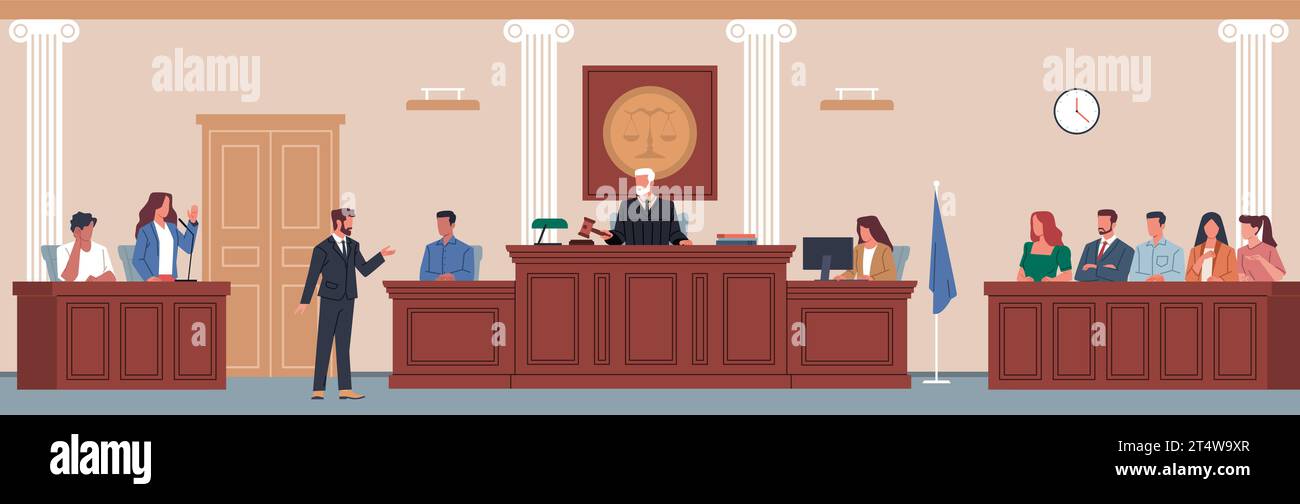Captivate the Court: Vital Components of a Powerful Trial Presentation
Vital aspects such as comprehending the target market, crafting a compelling narrative, and mastering spoken and non-verbal interaction are essential parts of an effective discussion. As these aspects intertwine, they create a cohesive method that not just notifies yet additionally involves jurors on multiple levels.

Understanding Your Audience
Understanding your audience is a crucial element of efficient test discussion. A successful presentation hinges on the ability to comprehend the demographics, worths, and predispositions of jurors. This comprehension educates just how debates are framed, evidence exists, and sob stories are crafted, ensuring that the message reverberates with the jurors on an individual level.
Study shows that jurors come from diverse backgrounds and may have varying degrees of comprehending concerning lawful procedures (trial presentation). Hence, it is essential to prevent lawful jargon that could alienate or confuse them. Instead, employing clear, relatable language cultivates involvement and understanding. Additionally, comprehending the jurors' potential prejudices and life experiences allows the test presenter to anticipate objections and address issues proactively.
Reliable trial discussion additionally includes observing jurors' responses during the process. Engaging with jurors as individuals rather than a collective device is important in cultivating a strong connection in the court room.

Crafting a Compelling Story
Crafting a compelling story is vital in guiding jurors via the complexities of an instance. A well-structured narrative not only streamlines elaborate legal principles however also involves jurors on an emotional degree, making the information more relatable and remarkable.
To achieve this, lawyers must start by identifying the core message they desire to convey. This message ought to resonate with the jurors' worths and experiences, promoting a connection that goes beyond mere realities. The narrative needs to unfold practically, providing occasions in a clear series to avoid complication. This chronological strategy can assist jurors adhere to the development of occasions, emphasizing domino effect.
Incorporating human aspects-- such as individual stories or stories-- can further improve the narrative's impact. These aspects stimulate empathy, enabling jurors to picture the effects of the instance on real lives. Additionally, utilizing a constant style throughout the discussion enhances the main argument, making it simpler for jurors to maintain crucial points.
Ultimately, a compelling story changes a test discussion from a mere recounting of realities into an influential tale that astounds the jury, encouraging them to mull over with both reason and emotion.
Using Aesthetic Help
Integrating aesthetic help into a trial discussion can substantially boost jurors' understanding and retention of info. Visual products such as graphes, layouts, pictures, and video clips can change intricate lawful principles and evidence right into quickly digestible styles. By involving numerous detects, these aids permit jurors to envision the case's key components, making it less complicated for them to adhere to along and understand complex information.
In addition, well-designed visual aids can emphasize crucial points and highlight relationships in between various pieces of proof. For circumstances, timelines can properly illustrate the series of events, while annotated photos can clear up certain information relevant to the instance. This not just help in understanding but additionally reinforces the narrative offered by the lawyer.
It is crucial, nonetheless, to guarantee that visual help are relevant, clear, and expertly offered. Overly intricate or chaotic visuals may bewilder jurors and diminish the message. When made use of sensibly, visual help serve to enhance the oral disagreements and boost the total impact of the trial presentation. Eventually, reliable visual communication can be a powerful tool in encouraging jurors and assisting them get to informed conclusions.
Mastering Verbal Communication
Reliable spoken communication is essential in a trial presentation, as it functions as the primary means whereby lawyers convey their arguments and get in touch with jurors. Understanding this ability involves quality, persuasion, and involvement. Lawyers need to express their factors plainly and concisely, preventing lawful lingo that may confuse jurors. Related Site Simplicity in language promotes understanding and assists jurors realize intricate problems provided during the trial.
Additionally, tone and pacing dramatically influence exactly how messages are received. A confident tone shares authority, while suitable pacing allows jurors to soak up details without feeling overwhelmed. Lawyers must likewise vary their singing inflections to emphasize bottom lines and maintain jurors' interest throughout the presentation.
Furthermore, the company of verbal disagreements is crucial. Structuring the narrative rationally and coherently helps jurors comply with useful site the lawyer's line of thinking, making it much easier for them to keep essential details. Using convincing strategies, such as narration, can also improve the emotional resonance of the disagreements presented, thus creating a much more profound connection with jurors.
Ultimately, understanding verbal interaction not only reinforces an attorney's case however likewise promotes count on and rapport with the court, significantly boosting the opportunities of a beneficial judgment.

Involving With Body Language
Nonverbal communication plays an important duty in trial discussions, usually conveying messages that words alone can not share. Body movement, including motions, stance, faces, and eye call, considerably influences exactly how jurors perceive the reputation and sincerity of the presenter. A certain stance, with shoulders back and an open stance, can impart trust, while closed-off body movement may recommend defensiveness or uncertainty.

Faces ought to mirror the click to read emotions linked with the situation, strengthening the story being presented. As an example, a genuine expression throughout a touching minute can generate empathy and strengthen the psychological appeal. Eventually, grasping body language is necessary for efficient test discussions, as it improves spoken communication and establishes an engaging existence that reverberates with the jury.
Verdict
To conclude, captivating the jury necessitates a calculated strategy that encompasses understanding the target market, crafting a compelling story, using visual aids, mastering spoken interaction, and engaging through body movement. Each element plays an essential function in producing a powerful test discussion that resonates with jurors on both emotional and intellectual levels (trial presentation). By integrating these elements efficiently, legal specialists can dramatically boost their capability to convince and affect court decision-making